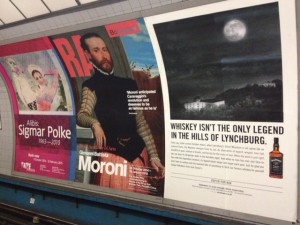Giovanni Battista Moroni – Royal Academy, London

It would seem that Moroni has spent more time in fashion in the UK than elsewhere, making London perhaps the perfect setting for a small and well-curated exhibition that aims to increase the public’s regard for his work once more. Some early acquisitions by the National Gallery mean that perhaps his most famous work, known as ‘The Tailor’, is housed here, and his renown in the Victorian period saw him referenced in George Eliot’s ‘Daniel Deronda’.
Why, then, is he not more famous? It seems to be a series of misfortunes of the political and academic varieties. Firstly, he spent much time in Milan where, under Spanish rule, art tended towards Counter-Reformational doctrines. After spending time in Bergamo, he retreated eventually to his native town of Albino, which, although providing opportunities to paint vivid portraits from life, hardly matched the artistic platform of Florence or Venice. Then there is the fact that he was omitted from an influential work on Italian Renaissance artists, an oversight from which his reputation has had difficulty recovering. In a century packed with big names like Michelangelo, Raphael, Titian and Bronzino, it is perhaps hard to convince the average museum-goer to privilege the works of a painter whose name currently packs less of a punch.
Is he then the equal of the masters of the Renaissance? The Royal Academy certainly puts forward a good case. The exhibition begins with works by his master, Moretto, before moving through Moroni’s early devotional works, aristocratic portraits, less aristocratic portraits, altarpieces and finally what is described as being the beginnings of modern portraiture. The works are well-selected, and the small number of them allows the viewer to consider each of them in depth. There are highs and lows among the earlier works. Some of his aristocratic portraits show more of the sitter’s character than others, and the religious works tend to be slightly flatter, adhering as they do to established models of religious devotion, although the way that he combined religious imagery with portraiture in the ‘visions’ he portrayed is more interesting. In the room of portraits of non-aristocrats (typically merchants, churchmen and professionals), Moroni seems to revel in the relative freedom afforded by these sitters, for whom a full-length portrait as a display of power and wealth was perhaps out of reach, but who sat happily and frankly for bust-length works. The portraits in this room seem more modern because they are more direct, and seem more psychologically powerful.
The best argument for rehabilitating Moroni among the top of his Renaissance peers is definitely the final room, in which a group of late portraits have been assembled which show how his skills in creating atmospheric, charismatic portraits evolved over his career. Full-length portraits now make a comeback, as well as smaller, more intimate works, and as in the best of his other work on display, his skill at depicting costumes and fabrics does not detract from his ability to focus on his sitter. ‘The Tailor’ is a prime example of this: he is clearly proud of his accomplished outfit, but it is the man himself who draws the viewer’s gaze, his sensitive portrayal as he looks out at the viewer and catches their eye.
While there will always be a lot of competition in the field of most-beloved Renaissance artists, then, this exhibition has convinced me that Moroni is a solid choice, who deserves a bit more adulation than he perhaps currently receives. I, for one, will linger a little longer when I see his name on a label in future.
